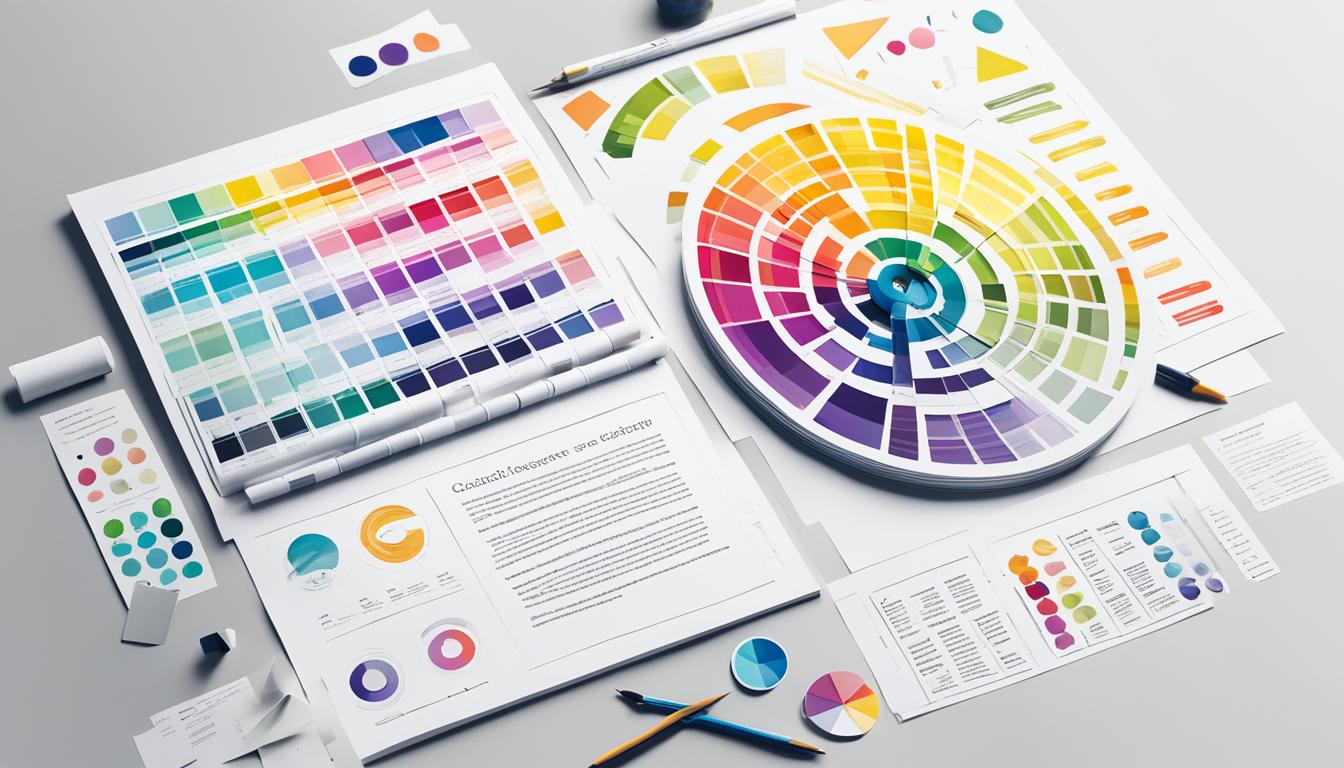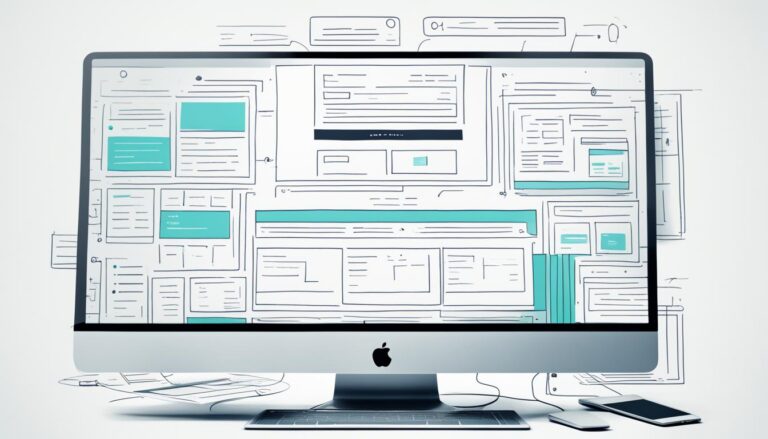Build Your Graphic Design Portfolio Effectively
A graphic design portfolio is a crucial asset for any aspiring graphic designer. It serves as a showcase of your skills, creativity, and experience, and can significantly impact your career opportunities. In today’s digital age, most portfolios are created online, through graphic designer websites. These websites allow you to not only display your design work but also connect with clients and build a community of like-minded individuals.
A well-curated graphic design portfolio should include a selection of your best work, including examples from client projects, and should highlight your unique style and design process. In this article, we will provide you with expert tips on how to build an effective graphic design portfolio that will captivate and impress potential clients.
Creating an impressive graphic design portfolio requires careful planning and attention to detail. It is essential to showcase your best work in a visually appealing and user-friendly manner. By curating a selection of your top projects, providing detailed descriptions, and customizing your portfolio website to align with your brand identity, you can create a compelling graphic design portfolio that sets you apart from the competition.
Remember to regularly update your portfolio with new work and continuously refine your design skills to stay relevant in the ever-evolving field of graphic design. With a well-crafted graphic design portfolio, you can elevate your career and open doors to exciting opportunities in the industry.
What is a Graphic Design Portfolio and Why Do You Need One?
A graphic design portfolio is a collection of your best design work that showcases your skills and abilities as a graphic designer. It serves as a powerful tool for clients or employers to evaluate your suitability for a project or job opportunity. Having a well-curated portfolio can make a significant impact on your career prospects.
Not only does your graphic design portfolio display your design work, but it also provides insights into your design process, industry specialties, and personal style. It is a platform for you to communicate your unique approach and creative vision. Your portfolio should captivate potential clients or employers and leave a lasting impression.
- Highlighting your design work: Your portfolio should showcase a selection of your best projects that demonstrate your technical skills, creativity, and versatility.
- Providing insights into your design process: Include descriptions or case studies that offer a glimpse into your problem-solving abilities, strategic thinking, and attention to detail.
- Showcasing industry specialties: If you specialize in a particular industry or have expertise in specific design areas, make sure to emphasize this in your portfolio to attract clients or employers within your niche.
- Expressing personal style: Your portfolio should reflect your unique aesthetic and design sensibilities, allowing potential clients or employers to understand your artistic vision.
- Including contact information: It is essential to provide easy access to your contact details for potential clients or employers who are interested in reaching out to you for potential collaborations or opportunities.
“A strong graphic design portfolio is crucial in a competitive market, as it can make a significant impact on your career prospects.”
In today’s digital landscape, building a graphic design portfolio as a website has become the norm. This allows you to connect with clients and share your work with a global audience. A well-designed and user-friendly portfolio website can help you make a memorable first impression and effectively showcase your designs to a wider audience.
Whether you aspire to work as a freelance graphic designer, land a job at a design agency, or attract clients for your own business, having a strong graphic design portfolio is essential. It demonstrates your commitment to your craft and your ability to deliver high-quality design work. A well-crafted portfolio can open doors to exciting opportunities and propel your career forward.
How to Create an Impressive Graphic Design Portfolio
Creating an impressive graphic design portfolio requires careful planning and attention to detail. A well-curated portfolio can showcase your skills, creativity, and unique style, helping you stand out in a competitive field. Follow these key steps to create a portfolio that captivates potential clients:
- Choose your best work: Select a diverse range of your most compelling design projects to showcase your versatility and expertise.
- Showcase your process: Provide insights into your design thinking and problem-solving abilities by including sketches, wireframes, and prototypes.
- Highlight client projects: Feature projects you’ve completed for clients to demonstrate your ability to meet their specific needs and deliver high-quality work.
- Curate your portfolio: Arrange your work in a logical and visually appealing manner. Consider organizing it by project type, industry, or design specialty.
- Add project descriptions: Include brief descriptions for each project, highlighting the objectives, challenges, and outcomes.
- Include case studies: For more complex projects, provide in-depth case studies that detail your design process, research, and problem-solving strategies.
- Optimize for online viewing: Keep in mind that most portfolios are accessed online, so optimize your website for easy navigation and responsive viewing on different devices.
- Add a personal touch: Incorporate your personality and design style into your portfolio to make it memorable and unique.
- Update regularly: Continuously update your portfolio with new projects to showcase your growth and development as a designer.
Remember, creating an impressive graphic design portfolio is an ongoing process. Regularly evaluate and refine your work to ensure it aligns with your evolving skills and career goals.
Conclusion
Building a graphic design portfolio is an essential step in advancing your career as a graphic designer. It allows you to showcase your skills, creativity, and unique style to potential clients and employers. With the increasing importance of online portfolios, it is crucial to create a visually appealing and user-friendly website that effectively highlights your best design work.
By curating a selection of your best projects, providing detailed descriptions, and customizing your portfolio website to align with your brand identity, you can create a compelling graphic design portfolio that sets you apart from the competition.
Remember to regularly update your portfolio with new work and continuously refine your design skills to stay relevant in the ever-evolving field of graphic design. With a well-crafted graphic design portfolio, you can elevate your career and open doors to exciting opportunities in the industry.
FAQ
What is the purpose of a graphic design portfolio?
A graphic design portfolio serves as a showcase of your skills, creativity, and experience as a graphic designer. It allows clients or employers to evaluate your suitability for a project or job opportunity.
What should be included in a graphic design portfolio?
A well-curated graphic design portfolio should include a selection of your best design work, examples from client projects, insights into your design process, industry specialties, personal style, and contact information. It may also feature case studies from past employers.
How should a graphic design portfolio be presented?
In today’s digital landscape, graphic design portfolios are commonly built as websites. A visually appealing and user-friendly website that effectively highlights your best design work is crucial. Customizing your portfolio website to align with your brand identity is also important.
How often should a graphic design portfolio be updated?
It is recommended to regularly update your graphic design portfolio with new work. This helps to showcase your latest skills, stay relevant in the industry, and attract potential clients or employers.










